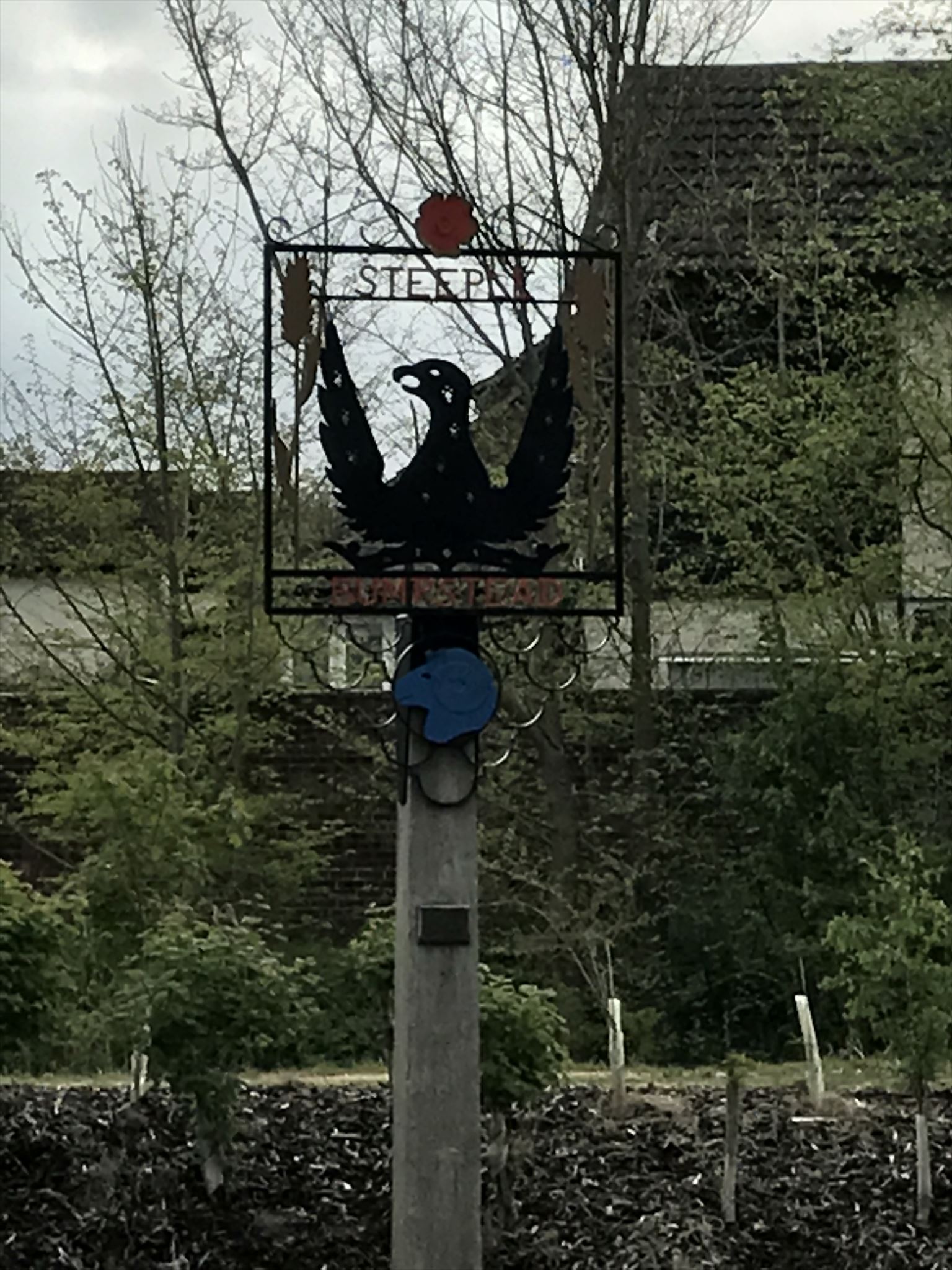
Steeple Bumpstead is a village and civil parish 3 miles (4.8 km) south of Haverhill in Braintree district, Essex, England. The parish church does not have a steeple, however the Congregational Church has a small Victorian one. It is believed that the steeple referred to was located on the A1307 close to what is now the Wixoe Pumping Station.
Bumstead or Bumsted is Anglo-Saxon for "place of reeds".
There has been a long history on non-conformist belief in the village which continues to this day in the Congregational Church. A Bumpstead man was burnt to death in the parish for his beliefs. Along the Blois Road, leading from Bumpstead to Birdbrook, is a field that has been called the ‘Bloody Pightle’, and that is where he is believed to have been martyred. In 1527 John Tibauld and eight other village residents were seized and taken before the Bishop of London, charged with meeting together in Bower Hall to pray and read a copy of the New Testament. Although the non-conformists in the village were encouraged by the powerful Bendyshe family that lived at Bower Hall, even their influence could not save Tibauld. He was burned at the stake. Having fallen into ruin after use as a ‘concentration camp’ in the First World War, Bower Hall was finally demolished in 1926 and the materials sold off. The great staircase found its way to the United States.
A Moot Hall, known as ‘the Old Schole’, symbolises Steeple Bumpstead and is recorded in the Domesday Book. In the 1830s, when it was ‘a school for farmers’ sons’, the villagers forcibly took possession of it, disputing the claim of George Gent of Moyns to have the right to appoint the headmaster. Eventually an ecclesiastical court upheld the villagers’ claim.
Steeple Bumpstead was one of the first villages in the country to have its own village policeman when county policing came into being in Essex. In 1840, William Rattigan was one of the very first Essex Police Officers to be assigned a village beat. There was a police officer stationed in the village for 160 years from 1840 to 2000 when the last 'bobby', Ray Howard, retired. For years the village was a hotbed of trouble with many 'riots' and unrest during the agricultural strikes in 1914 and the 1920s. In fact the national agricultural strike of 1914 was started nearby in Castle Camps and the troubles spread to Steeple Bumpstead, which became a stronghold for the strikers
Nurse Edith Cavell had ties with Steeple Bumpstead long before she became a nurse. During 1886, Edith was appointed governess to the four children of the Reverend Charles Powell, vicar of Steeple Bumpstead. The former vicarage, where a stone plaque commemorates her stay, is a private residence on the corner of Chapel Street and Finchingfield Road. There is a plaque about Edith Cavell in the 11th century village church and a road named after her.
Colonel J. C. Humphrey, son of the village wheelwright, allegedly invented corrugated iron. He built and lived in the Iron House, North Street, which was demolished in the 1960s. At one time Humphreys Ltd of London claimed to be the ‘largest works in the world’ and held a Royal Warrant as ‘supplier to His Majesty King Edward VII’
(Information gathered from Wikipedia)
If anybody would like to expand this series please do. I would just ask that you let Smokeypugs know first so they can keep track of the Village Sign numbers and names to avoid duplication.